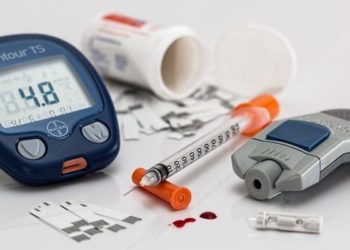2 Minute Medicine Rewind January 2, 2023
1. High paternal rates of distress seen in fathers exposed to poor fetal, neonatal and maternal outcomes
2. Support systems in place for these fathers may help prevent poor mental health outcomes
Evidence Rating Level: 3 (Average)
The impacts of traumatic perinatal events are well described in mothers, however limited research has been done on the psychological consequences in fathers, and paternal stress reactions have not been extensively studied. Fathers who experience traumatic events such as fetal loss may experience post-traumatic stress symptoms (PTSS); after a fetal loss, previous studies have found up to 16% of fathers developing post-traumatic stress disorder in a subsequent pregnancy. This prospective study included 28 fathers whose partners had experienced a pregnancy or childbirth complicated significant congenital abnormality or aneuploidy, termination of pregnancy, fetal death in-utero, stillbirth, admission to the NICU or special care nursery or significant maternal morbidity, such as a life-threatening postpartum haemorrhage or an emergency postpartum hysterectomy. The participants were then screened using the Edinburgh Postnatal Depression Scale (EPDS) and the Impact of Event Scale-revised (IES-R) was used to assess the distress in response to trauma. Scales were administered 2-3 weeks (timepoint 1) and then 3-4 months after the event, and those who had high scores were offered immediate mental health referrals. 14 of the 28 fathers suffered fetal loss. 59.3% of fathers had overall high EPDS at timeline 1 and in 40% of fathers at timeline 2. None of the fathers who had low EPDS and IES-R scores at timepoint 1 had high scores at timepoint 2, but it is to be noted that some fathers developed worsening of previously high scores. A strong correlation between IES-R and EPDS scores were seen at both timepoints (timepoint 1: ρ = 0.787, p<0.001; timepoint 2: ρ = 0.859, p<0.001). Although this study was small in sample size, it does indicate that fathers with traumatic perinatal experiences may have high levels of distress. Future studies should identify appropriate support systems and screening systems for men who experience adverse perinatal outcomes, as well as long term mental health consequences.
1. Labor epidural analgesia does not affect rate of exclusive breastfeeding up to 6 months
Evidence Rating Level: 2 (Good)
Exclusive breastfeeding (EBF) is recommended for the first 6 months after birth by the World Health Organization. With labor epidural analgesia (LEA) become increasingly used, the impact of LEA on EBF has been questioned, with controversial results found in previous studies. This Chinese cross-sectional survey included 537 healthy mothers who had vaginal delivery and included questions to investigate breast feeding practice up to 6 months, LEA use during labor and other factors such as maternal sociodemographic characteristics, obstetric conditions, and breast feeding supports. No statistical differences were found in the rate of EBF up to 6 months between mothers with and without LEA (73.8% and 75.8% respectively, P=0.748). This study also found that for those who did not complete EBF up to 6 months, the main three reasons were no or insufficient breastmilk, inability to breastfeed as needed after return to work, and maternal related factors such as need for rest or worsening mood. Although a randomized controlled trial would help provide insight for the relationship between LEA and EBF, this would be unethical given the analgesic impact of LEA. This study found that other factors may have a greater role in the ability for EBF and no significant differences were found in those who received LEA versus those who did not. Future studies to monitor long term trends past 6 months as well as ones that focus on the other reasons found in this study may help in exploring reasons that may increase rates of EBF.
1. Poorer socioemotional development is seen in children with mothers who experienced intimate partner violence
2. Lower socioemotional development scores were also seen in children whose mothers had mild to severe depressive symptoms
Evidence Rating Level: 2 (Good)
Approximately 1 in 4 women have experienced physical and/or sexual intimate partner violence (IPV), with a higher prevalence in low- and middle-income countries. Those who experience IPV have higher reported rates of other problems such as depression and post-traumatic stress disorder and children living in the household of those experiencing IPV have higher risks of mortality and depression. It is known that maternal depressive symptoms are associated with lower levels of child socioemotional development, but few studies have investigated the association between IPV with socioemotional development. This cross-sectional study included 981 mothers and their children between the ages of 18 to 36 months. Mothers completed an IPV questionnaire, maternal depressive symptoms assessment and childcare questionnaire. Child socioemotional development was assessed using the Caregiver-Reported Early Childhood Development Instruments (CREDI). Exposure to IPV was assessed using an IPV module of a demographic and health survey, and the Patient Health Questionnaire-9 (PHQ-9) was used to assess maternal depressive symptoms. Finally, harsh child discipline was assessed using the United Nations Children’s Fund Multiple Indicator Cluster Surveys (MICS). Multiple models were used to assess the data and it was found that a negative association was observed between physical IPV only and physical and sexual IPV with child socioemotional development scores (mean difference, −0.022; 95% CI, −0.045 to −0.006 and mean difference, −0.045; 95% CI, −0.077 to −0.013, respectively), but neither showed statistical significance once depressive symptoms were included. A negative association between depressive symptoms and child socioemotional development was seen, even after adjusting for IPV (mean difference, −0.073; 95% CI, −0.103 to −0.043). This study was limited in its population, and measurement tools. The study was also only limited to physical and sexual forms of IPV and lacked information on fathers or other caregivers for the children. However, it does show an association between maternal IPV, depressive symptoms and child socioemotional development, indicating future studies on possible interventions to aid children in their socioemotional development.
1. Prognostic markers of residual disease following a loop electrosurgical excision procedure for cervical intraepithelial neoplasia grade 3 include: positive high-risk HPV, positive margin of specimens, and type II or III transformation zone
2. The most indicative markers were HPV-18 positivity and type III transformation zone
Evidence Rating Level: 2 (Good)
Cervical intraepithelial neoplasia 3 (CIN3), associated with human papillomavirus (HPV) infection, is premalignant state of cervical cancer. Loop electrosurgical excision procedure (LEEP) is an office procedure that is used conization treatment of CIN2-3, allowing for deep excision of the transformation zone. There is however a risk of recurrent or residual lesions, even in those who have negative margins of LEEP specimens, with 29-57% of those who had subsequent hysterectomy showing residual disease. Currently, hysterectomy is not recommended to all women with positive margins after LEEP of CIN 3, and recurrent disease is still found in those with negative margins. Identifying factors that can predict residual lesions may help guide treatment, including clearer indications for hysterectomy. This retrospective study involved 421 patients who had histologically confirmed CIN 3, who then had LEEP and subsequent hysterectomy within 6 months. 44.18% of hysterectomy specimens showed residual disease. Predictive markers in the specimens included positive endocervical curettage (ECC), positive margins, high risk HPV infection and type II or III transformation zoon. HPV-18 positivity and type III transformation zone were most predictive (OR, 7.13; 95% CI, 3.49 to 14.56; p < 0.001 and OR, 6.37; 95% CI, 2.91 to 13.94; p < 0.001 respectively). Currently, hysterectomy is not recommended to all women with positive margins after LEEP of CIN 3, and recurrent disease is still found in those with negative margins. The retrospective design and limited population size are limitations to this study, as well as duration of HPV infection was not assessed. However, this study shows that certain markers such as positive high-risk HPV, positive margin of specimens, and type II or III transformation zone are reliable markers of residual disease. Future studies are needed to continue to guide treatment of CIN3 lesions to reduce rates of recurrent and residual disease.
1. The COVID-19 pandemic may have limited access to emergency department (ED) care, with increased ED encounters for sexual assault seen leading up to the pandemic and a decrease after lockdown was implemented
Evidence Rating Level: 2 (Good)
Various stressors such as financial stress, family stress, increased caregiver burden and fear of COVID-19 infection are all factors that were affected by the COVID-19 pandemic and are associated with the risk of gender-based violence and sexual assault. Additionally, physical distance protocols during the pandemic may have led to the isolation of someone with an abusive partner as well as led to a reduction in access to support systems including formal services such as health care and informal support from family and friends. This study aimed to compare rates of emergency department (ED) encounters in Ontario for sexual assault during the pandemic. Two months prior to the pandemic, ED encounters for sexual assault increased among both female and male individuals (8.4 vs 6.9 cases per 100 000; RD, 1.51 [95% CI, 1.06 to 1.96]; aRR, 1.22 [95% CI, 1.09 to 1.38] and 1.2 vs 1.0 cases per 100 000; RD, 0.19 [95% CI, 0.05 to 0.36]; aRR, 1.19 [95% CI, 0.87 to 1.64] respectively. Following the implementation of lockdown and during the first two months of the pandemic. The rates then decreased for both female and male individuals (4.2 vs 8.3 cases per 100 000; RD, −4.07 [95% CI, −4.48 to −3.67]; aRR, 0.51 [95% CI, 0.44 to 0.58] and 0.5 vs 1.2 cases per 100 000; RD, −0.72 [95% CI, −0.86 to −0.57]; aRR, 0.39 [95% CI, 0.26 to 0.58] respectively). For the rest of the study period, oscillations were seen in ED encounter rates, with rates similar to those prior to the pandemic when there were loosened COVID-19 restrictions. This pattern was seen across sex, age group, community size and income group. This study was limited as it only used data from emergency department settings, which tend to indicate the most extreme cases and is unable to estimate the prevalence of sexual assault in the general population. However, this study does suggest that the implementation of COVID-19 measures may have limited access to care for those experiencing sexual assault. Future studies are needed to identify ways in which to balance pandemic protocols while including antiviolence considerations, and to also identify other factors and stressors that may impact rates of sexual violence.
Image: PD
©2023 2 Minute Medicine, Inc. All rights reserved. No works may be reproduced without expressed written consent from 2 Minute Medicine, Inc. Inquire about licensing here. No article should be construed as medical advice and is not intended as such by the authors or by 2 Minute Medicine, Inc.






